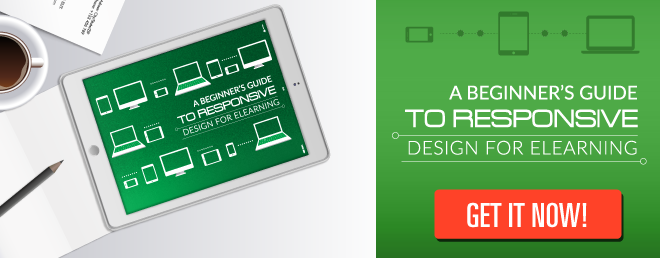Chief learning officers, learning leaders, and training coordinators everywhere are well aware of the need to increase mobile training programs. After all, 74% of employees say they access resources from their smartphones to do their jobs— and that number is expected to continue to grow.
But it can sometimes seem overwhelming to plan an effective mobile training strategy at your organization, especially if it’s a significant departure from what your company has done to date.
If you’re ready to use mobile to improve the training strategy at your organization, you can start by using these tips to focus on several key areas:
1) Know your target audience
Do you know your worker's habits, needs, and obstacles? Do you have remote teams or members that need on-the-job support while in the field? Are they used to working with mobile devices? Do you have employees who have been asking for, or expecting, mobile training already?
If you hire Millennials, consider the fact that nearly 80% of those workers believe that access to technology makes them more efficient at their jobs. On the opposite side of the spectrum, you may have employees who are not technologically savvy enough to use mobile apps.
It’s important that you take a critical look at your organization so you can make the best decisions about how to invest time and money into developing mobile-ready training programs.
Another thing to consider: do you have employees who often travel for business and could benefit from accessing training courses on airplanes or other offline environments? This could drive you to consider a native mobile application that users can download to their phones — as opposed to the traditional responsive course that requires a constant Internet connection.
Read: What Do Modern Learners Actually Want From Your eLearning Courses?
Recommended read: Understanding The Difference Between eLearning and mLearning
2) Start small
Rather than thinking of this move as the flip of a switch where you go from non-mobile to 100% mobile training, think instead of the best way mobile can fit into your existing training plan.
While there may be pressure or demands to make everything mobile right away, there will always be specific courses or learner needs that may be a priority. Don’t assume that every program needs mobile-accessible content at first.
In the beginning, you might want to enable mobile training for employees who are not tied to a desk so they can utilize their smartphones to learn wherever they are. Also, you can start creating a mobile learning culture by offering your workers quick reminders or weekly refreshers of the key concepts they learned from previous training sessions via mobile devices. Even if you hope to have it replace in-classroom or virtual training one day, it’s better to do this slowly over time so you can gauge the effectiveness and make adjustments as needed.
Read more: How To Create A Successful Mobile Learning Strategy
3) Think of Micro Learning Moments
Google has coined the term “micro-moments” to make reference to modern user behavior online. Learning leaders should also try integrating these "moments" into their mobile learning strategy. After all, your employees are learning, taking action, and making decisions in a series of micro-learning moments. Taking advantage of these moments will enhance existing training programs, and you’ll be able to reach your employees where they are most comfortable: through the devices, they’re taking on the go.
There’s no question that mLearning has the potential to be incredibly effective. But this only happens if the courses contain concise, focused content that addresses an employee's need. Think about the daily life of your staff both on and off the job and consider the best way that mobile course, could fit seamlessly into their day.
It isn’t about taking your existing desktop-based program and transferring it into a mobile platform. Employees aren’t going to be interested in taking a long 1-hour certification program on their mobile devices: they won’t find their time, their attention spans will be limited, and their mobile devices may not support everything they need to accomplish in the program.
Challenge yourself to consider how you can adapt your training program, or key parts of the program, into effective mobile training. For instance, divide content into short sections that focus on specific lessons and include video content that drives home lessons taught in other mediums.
Don’t waste time creating mobile courses that don’t directly impact the learning goals of your employees or your organization.
Also read: Start Thinking of Micro Learning Moments Now
4) Involve IT in your plan ASAP
Don’t wait until the last minute to involve your IT department in your mobile learning strategy. Every organization has technical limitations to consider; bringing IT into the conversation now will help you make better decisions about your overall strategy.
Some questions to consider out of the gate include:
- Do employees have their own devices or will the company provide them?
- Which devices and operating systems do you plan to support?
- How often will you provide training upgrades and will you assist employees with this process?
- Who is responsible for technical troubleshooting and support?
Also read: Why Video is a Must-Have for Your Mobile Learning Strategy
Starting a mobile training program is a big deal — but it’s a task that is entirely achievable. Take a deep breath and start your planning by understanding the needs of your employees. From there, you can plan effective content and work with your IT team to coordinate the program rollout.
REFERENCES:
Adding mobile to the learning mix
14 Tips for Great Mobile Learning at Your Company
Five Calls to Make When Developing a Mobile Learning Strategy
Finding the Right Learning Mix: https://www.clomedia.com/2015/06/17/finding-the-right-learning-mix/
How eLearning and mLearning can Work Together



